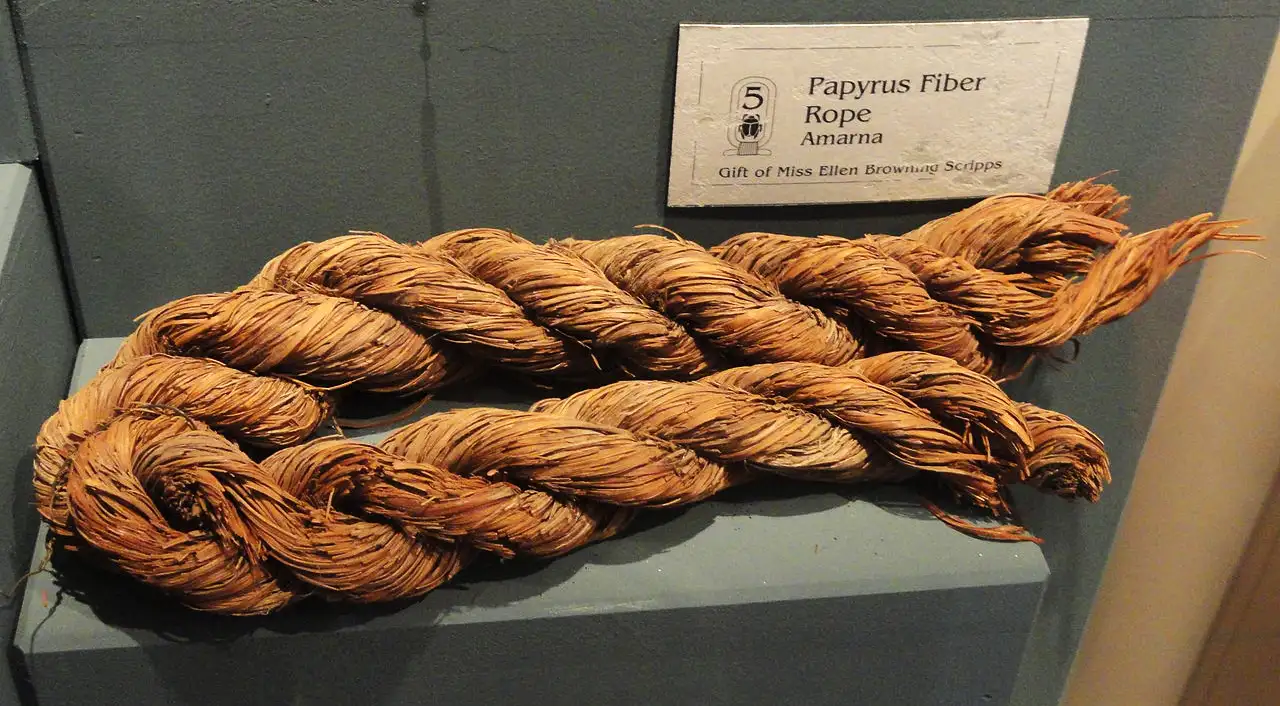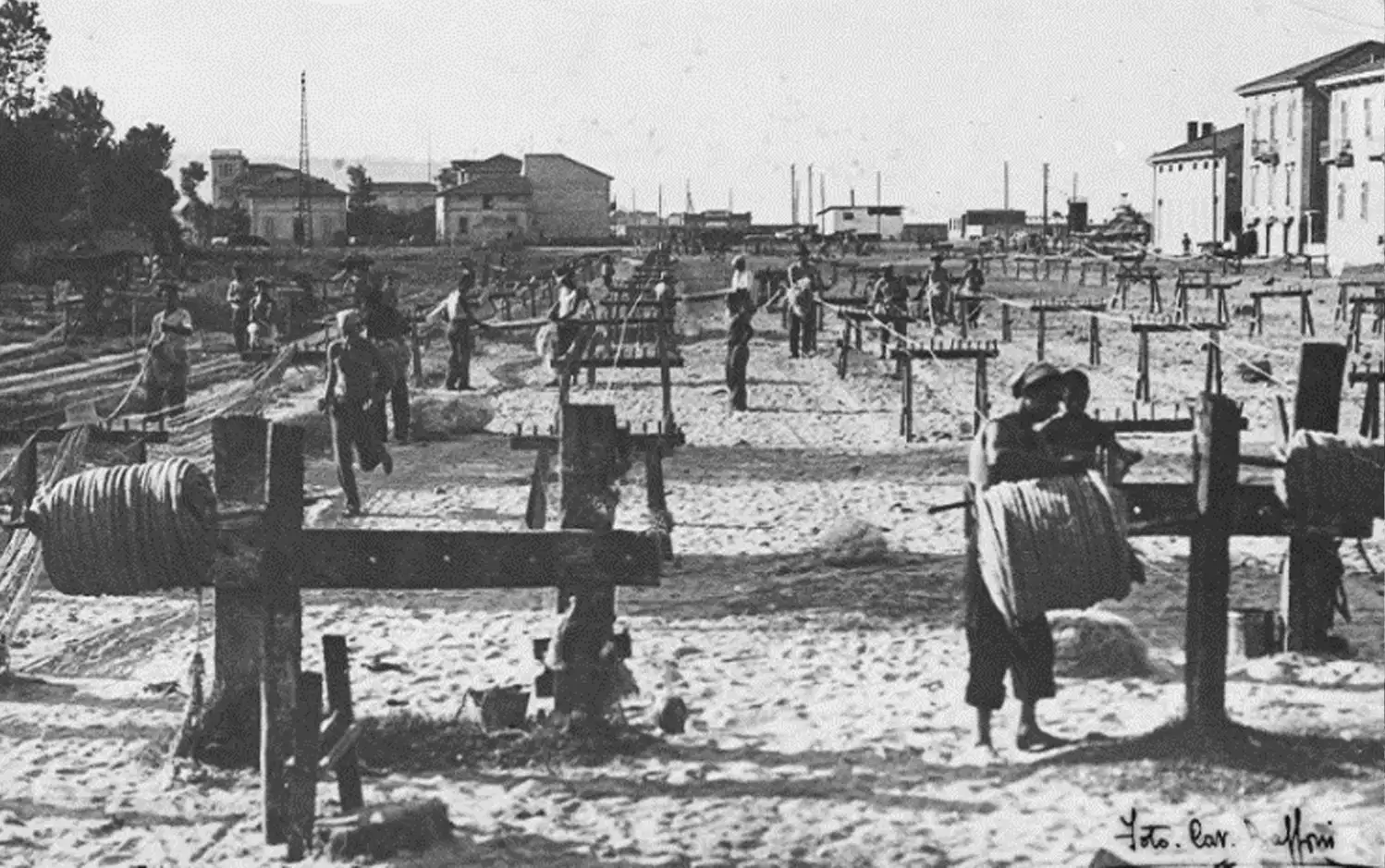A short trip back in time to retrace the history of ropes
Ropes1 have played a fundamental role in the history of humanity. Since ancient times in fact, ropes have been used for a wide range of practical purposes and have contributed greatly to the development of civilizations.
“The first archaeological evidence of a real rope (several fibers woven together to increase overall strength) dates back almost 30,000 years ago and is an imprint on clay left by a bundle of woven fibers. Fossilized rope fragments of almost one centimeter thick have also been recovered from the Lascaux caves, dated to about 15,000 years ago.
The ancient Egyptians were probably the first to create an instrument capable of making mechanically and quickly long fragments of cordage: the oldest ropes, made with palm, grass, linen or leather fibers, are at least 6,000 years old.”2
In ancient Egypt, ropes were used for building construction, transportation of heavy materials, and agriculture. The ropes were made by weaving natural fibers and were often reinforced with resins or wax to increase strength.

An example of a papyrus fiber rope dating back to ancient Egypt.
https://ape-egypt.org/user/wedjatpic/15519

https://commons.wikimedia.org/wiki/File:Rope_stretching.jpg#/media/File:Rope_stretching.jpg
In ancient Greece and the Roman Empire, ropes were used for building ships, bridges and buildings. The ropes were fundamental to lift enormous weights, such as large blocks of rock monuments and obelisks, to ensure the safety of the structures, for fishing and transporting goods.
During the age of maritime exploration, ropes became even more important. The ships needed strong ropes to lift the sails and maneuver the rudders. The ropes were made of natural fibers, such as hemp3, which were very resistant to wear and weathering.
With the advent of the Industrial Revolution, ropes began to be produced on a large scale using machinery. New synthetic fibers were introduced, such as nylon and polyester, which were even more durable than natural fibers. This allowed the creation of more powerful ropes, suitable for a wide range of industrial applications.
Steel wire ropes4 were invented in the 19th century, when advances in steel production technology have made possible the production of sufficiently thin and resistant metal wires to be woven together to form a strong and flexible rope.
The first steel wire ropes were made by Wilhelm August Julius Albert5, a German engineer, in 1834. Albert patented a method to produce parallel stranded steel ropes, which were stronger and more durable than the then-used textile fiber ropes.
Despite being one of the most significant innovations of all time, this discovery has not received the prominence it deserves. Perhaps this is because this invention arose from the need to find a solution to a problem, whereas the criterion for ranking the importance of a discovery is generally linked to its commercial success, whereas this one arose from the intent to find a solution to a problem rather than to make a profit.

Funai during the rolling phase
During the 20th century, steel wire ropes were further improved with the development of new types of steel and new production methods. Today, steel wire ropes are available in a wide variety of sizes, shapes and steel types to meet the needs of a wide range of applications.
Here are some of the main events in the history of steel wire ropes:
- 1834: Wilhelm August Julius Albert patented a method to produce steel ropes with parallel strands.
- 1870: Steel ropes were first used for the suspension ropes of the Brooklyn Bridge.
- 1880: Steel ropes are used for the first time for lift hoisting ropes.
- 1900: Steel ropes were used for the first time for the transmission ropes of wind turbines.
- 1950: Stainless steel ropes were developed.
- 1970: High-strength steel wire ropes were developed.
Today, steel wire ropes are an essential component of many industrial products and systems, used in a wide range of applications in various sectors such as:
- Lifting and handling loads
- Construction
- Building protection and earthing systems
- Industrial fishing
- Leisure fishing
- Agricultural installations
- Stone cutting
- Children’s playgrounds
- Architecture
Steel Ropes have a number of advantages over textile fiber ropes, including:
- Increased strength and durability
- Increased corrosion resistance
- Lower maintenance
Ropes continue to play a fundamental role in our society, even though they often go unnoticed.
They are an essential element in our security and progress and their history is a testament to human creativity and ingenuity in finding practical solutions for present and future challenges.